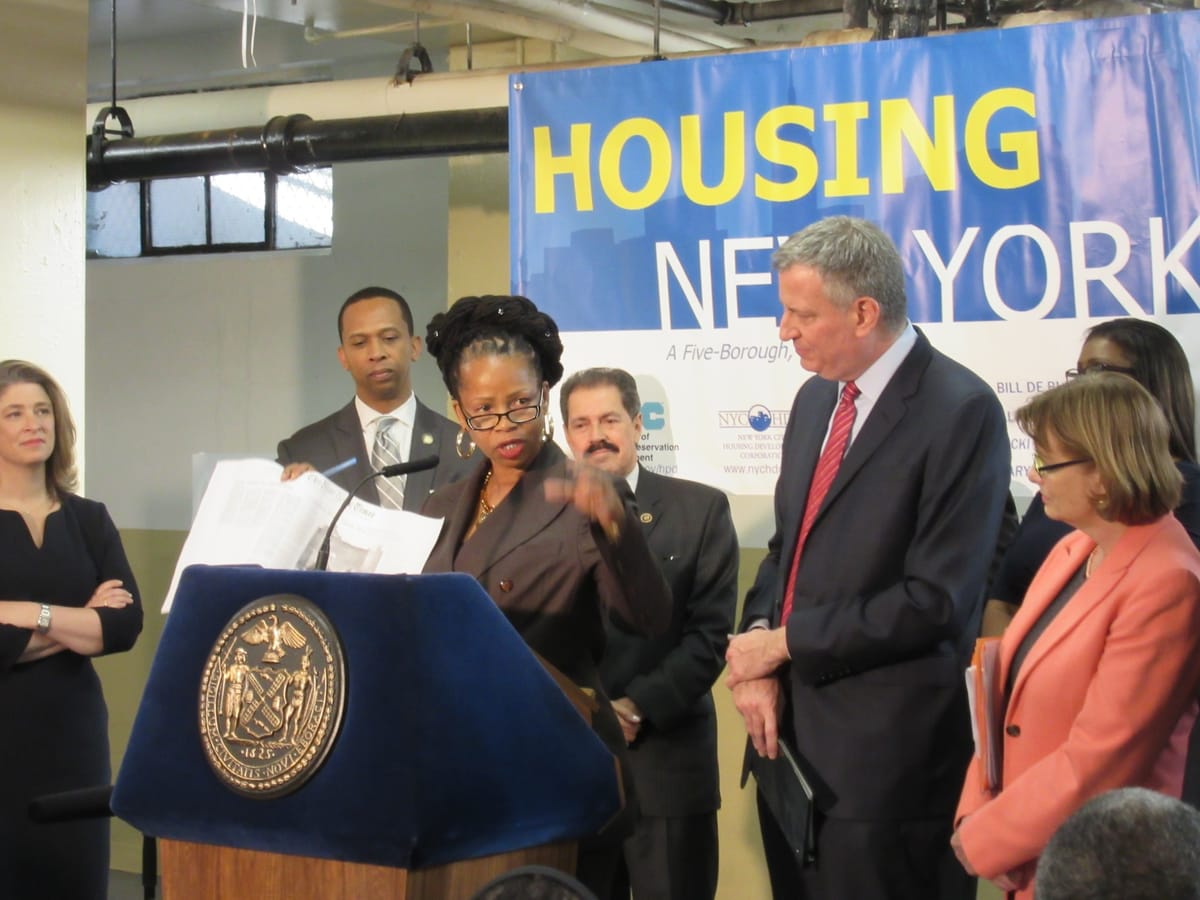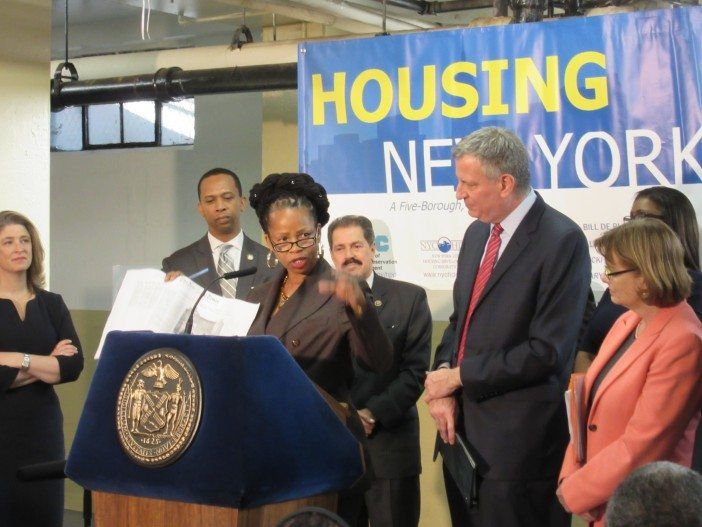Mayor Touts Affordable Housing Preservation In Fort Greene And City


Several residents of Fort Greene’s Navy Yard Houses at 45-55 North Elliott Place spoke to the media yesterday (Thursday, January 15), praising the city’s efforts to preserve existing affordable housing units through the “Housing New York” plan — a project that housing officials and Mayor Bill de Blasio state has gone so well that they are ahead of schedule.
Specifically, the first year saw 17,248 affordable units (plus 128 units for on-site superintendents) either preserved or created — 11,185 preserved and 6,191 created/funded — which was higher than the city’s 16,000-unit goal for 2014.
Of these, 86 percent are targeted for “extremely low income” ($629 maximum rent; less than $25,150 annual income for four people), “very low income” ($630-$1,049 rent; income of $25,151-$41,950 per year), and “low income” ($1,050-$1,678 per month rent; income of $41,951-$67,120 per year) families.
Also, 5,190 units are in Brooklyn and, overall, approximately 42,000 New Yorkers benefit from the year’s progress, said officials. In 45-55 North Elliott Place alone, 159 families who earn under $60,000 per year for a family of four are now able to stay in their homes — and will be able to stay there for at least the next 30 years, should they so choose. If they sell, they are required to sell to families that meet the same income threshold.

Resident- and community-focused safeguards like these are why third-generation tenant Sheryl Morse is pleased.
“When this area was in rapid decline, tenants developed a housing cooperative to ensure that low and middle-income residents can stay,” Morse said, referring to the tenant-led group on which she serves as president. “It hasn’t been easy. We fundraised for a down payment on the mortgage and paying for elevator repairs, which was hard, but we have survived and it was close, but we passed inspections.
“[Now] we are looking to not just survive, but live,” she added. “There has to be a partnership of not just bricks, but bricks, people, and money. [These city] numbers sound good, but numbers have a [positive] impact on our community.”
The money Morse speaks of is $3.1 million in capital funding from the city and $250,000 in City Council funding allocated by now-Public Advocate Letitia James during her tenure as councilmember of the 35th Council District. These funds are being used to provide ongoing upgrades to the building(s), including replacing windows and boilers, asbestos removal, and elevator maintenance.
“More and more people are priced out of their neighborhood and don’t have the choice to stay in the community, in the building they love, to know there is a place in this city for them,” said de Blasio. “We have to be a city for all.”
De Blasio also noted that his Housing New York plan is designed for the long haul. “When I leave, I will leave a plan to [allow the Department for Housing Preservation and Development to] stay on goal,” he said.
That means that the $1.9 billion in bonds leveraged by the city’s Housing Development Corporation (HDC) will continue to be put to use, and “the administration’s first area-wide rezonings move through the land use process, requests for proposal are issued on additional publicly owned sites, [and] new construction programs launch.”
Developers have until February 19 to submit proposals to build on up to 180 sites on a list of over 1,000 city-owned spaces. In Brooklyn, the sites are centered in the Bedford-Stuvyesant, Brownsville, East New York, and Weeksville neighborhoods, with one proposal so far in Williamsburg. As DNAinfo reported, many of them currently house community gardens.
The Housing New York plan aims for 200,000 affordable units to be sustained or constructed by 2024. Approximately 60 percent of these will be preservation of existing units and roughly 40 percent will be newly constructed affordable units.



